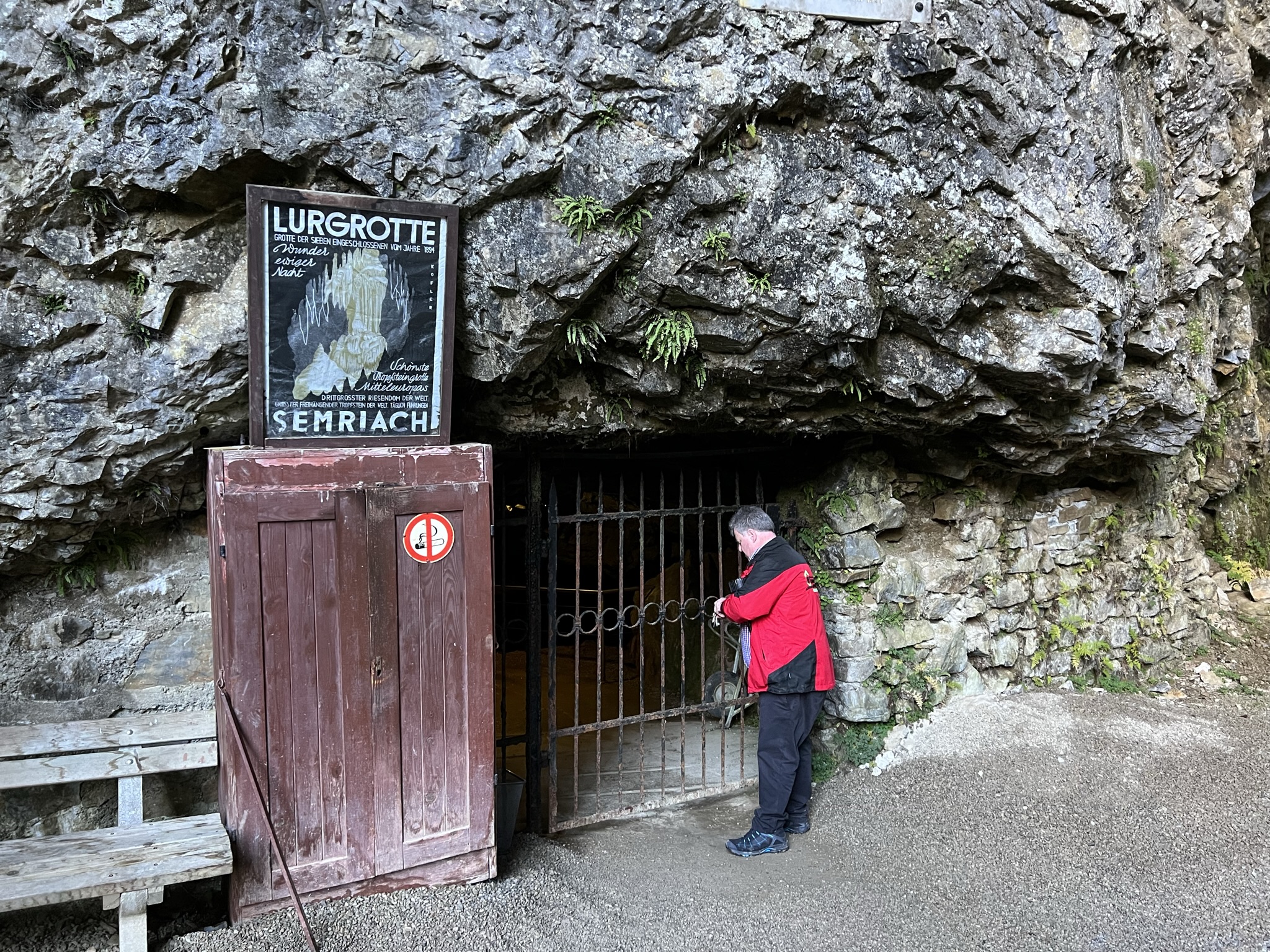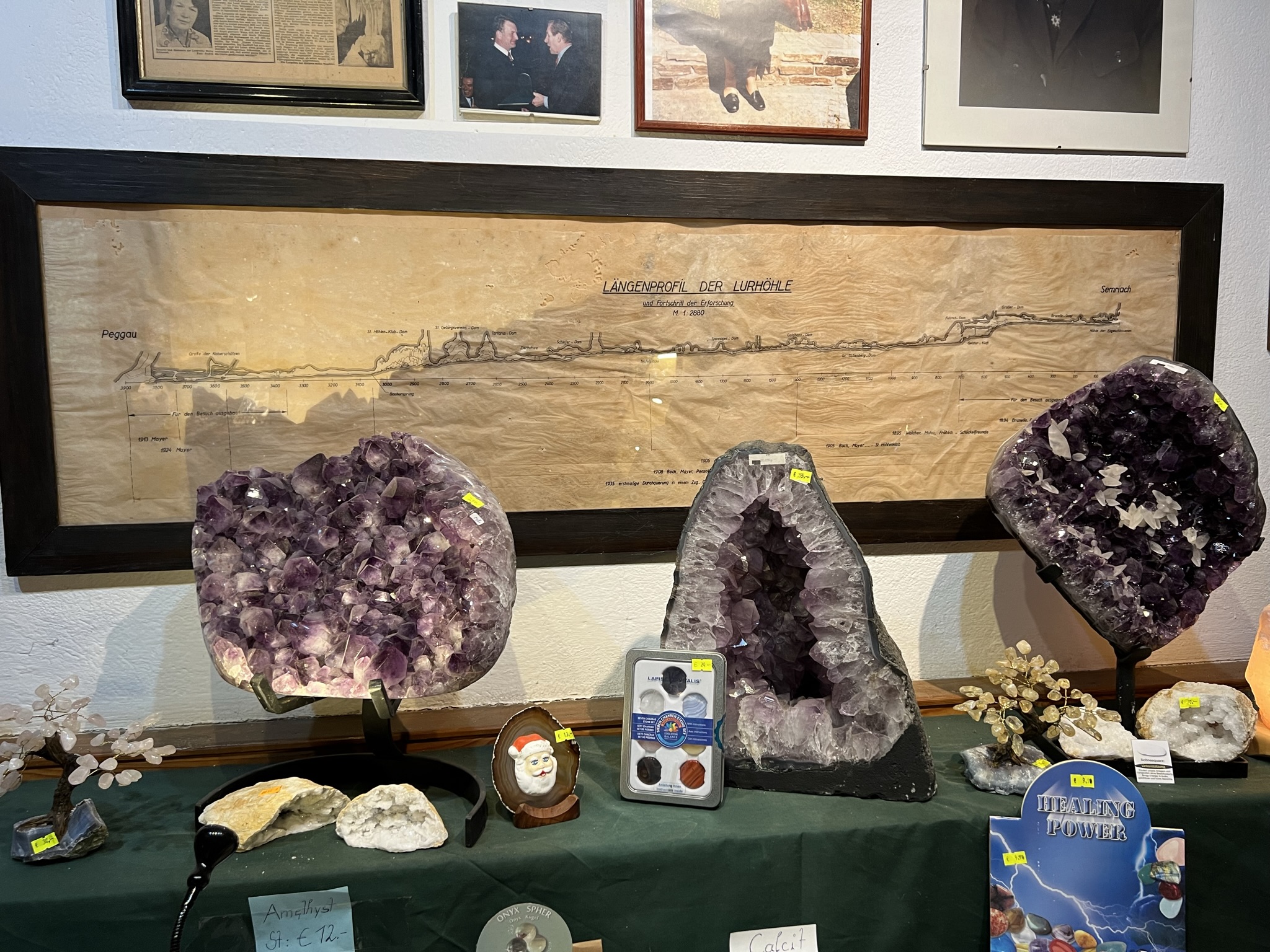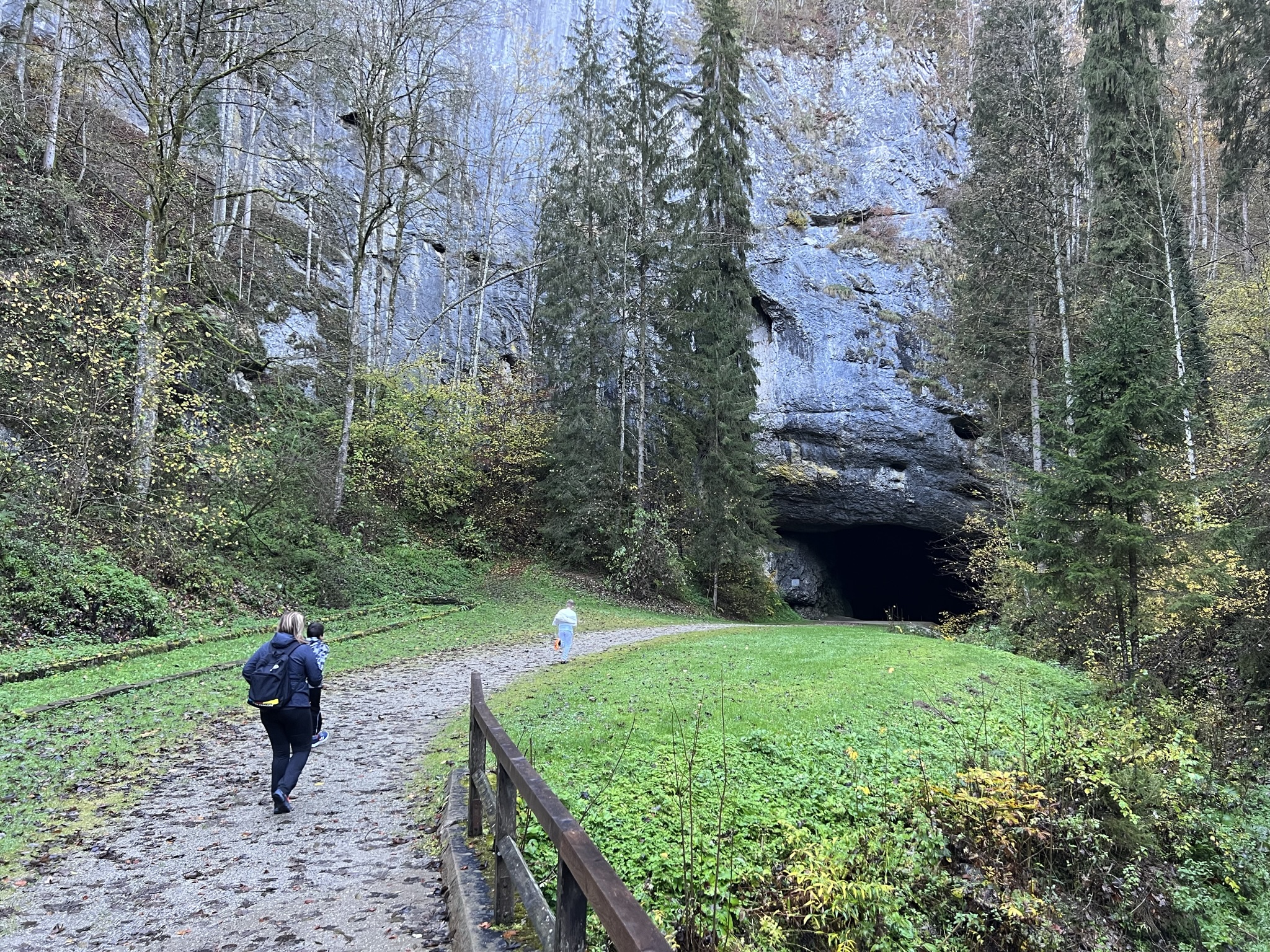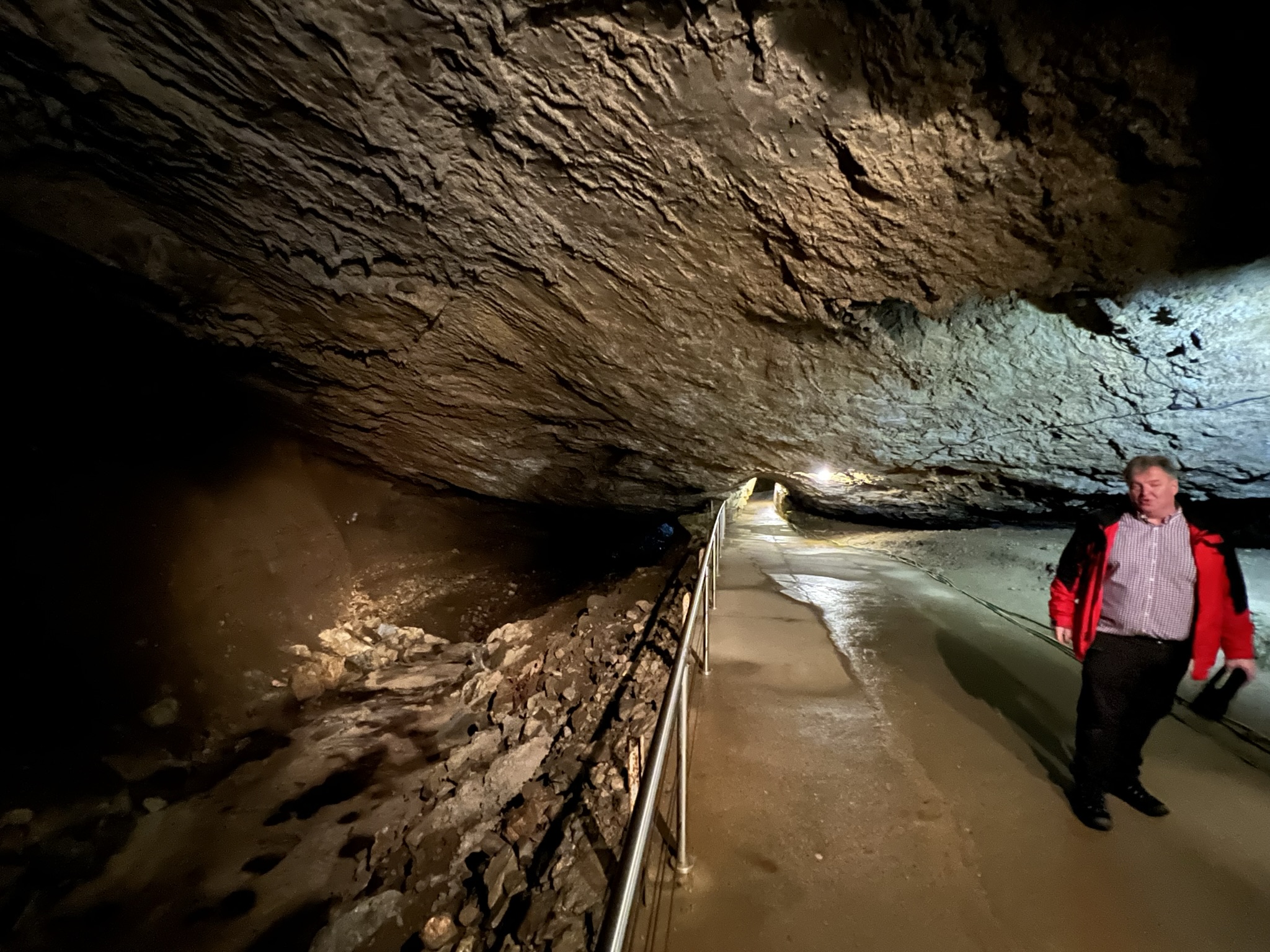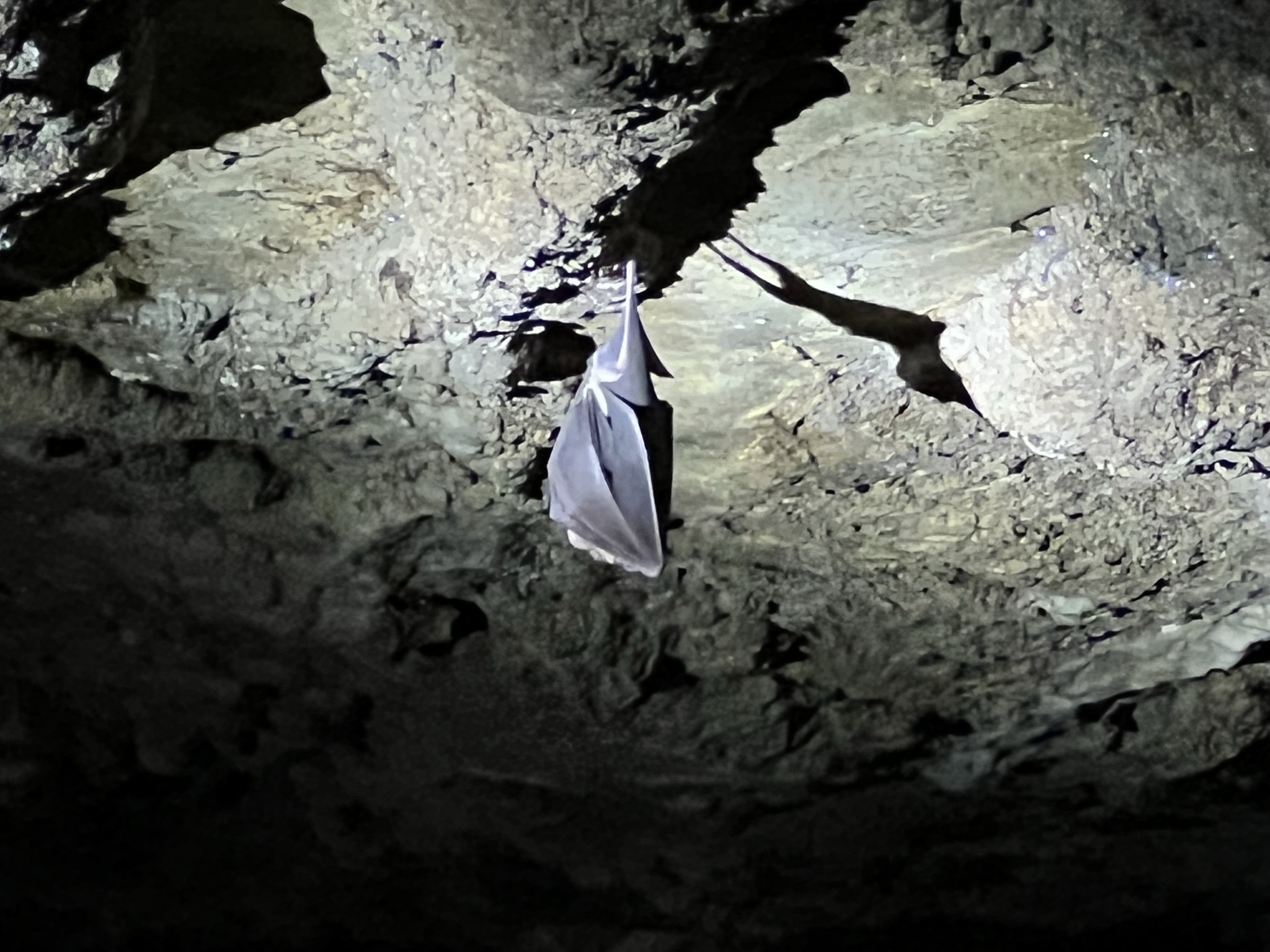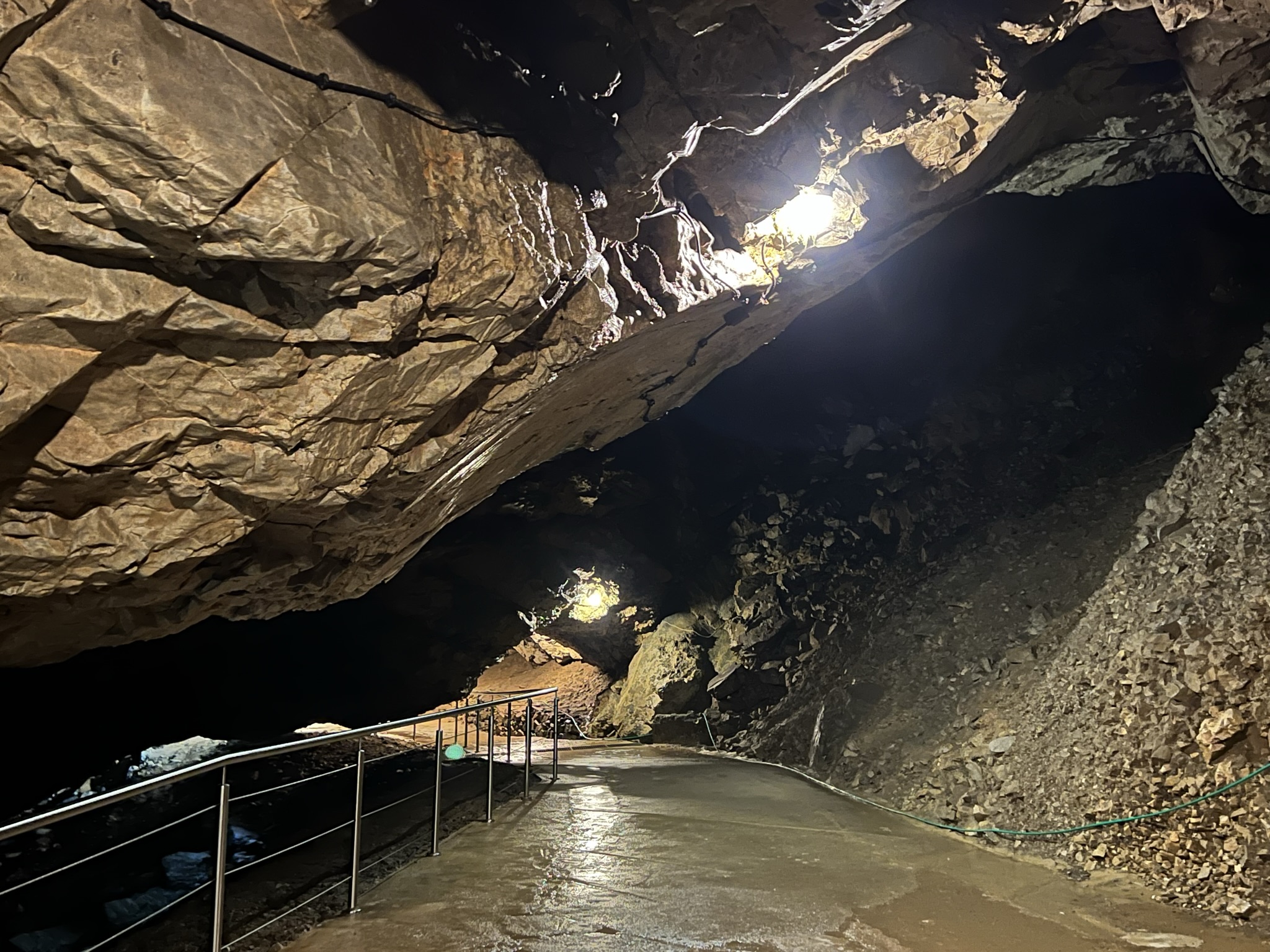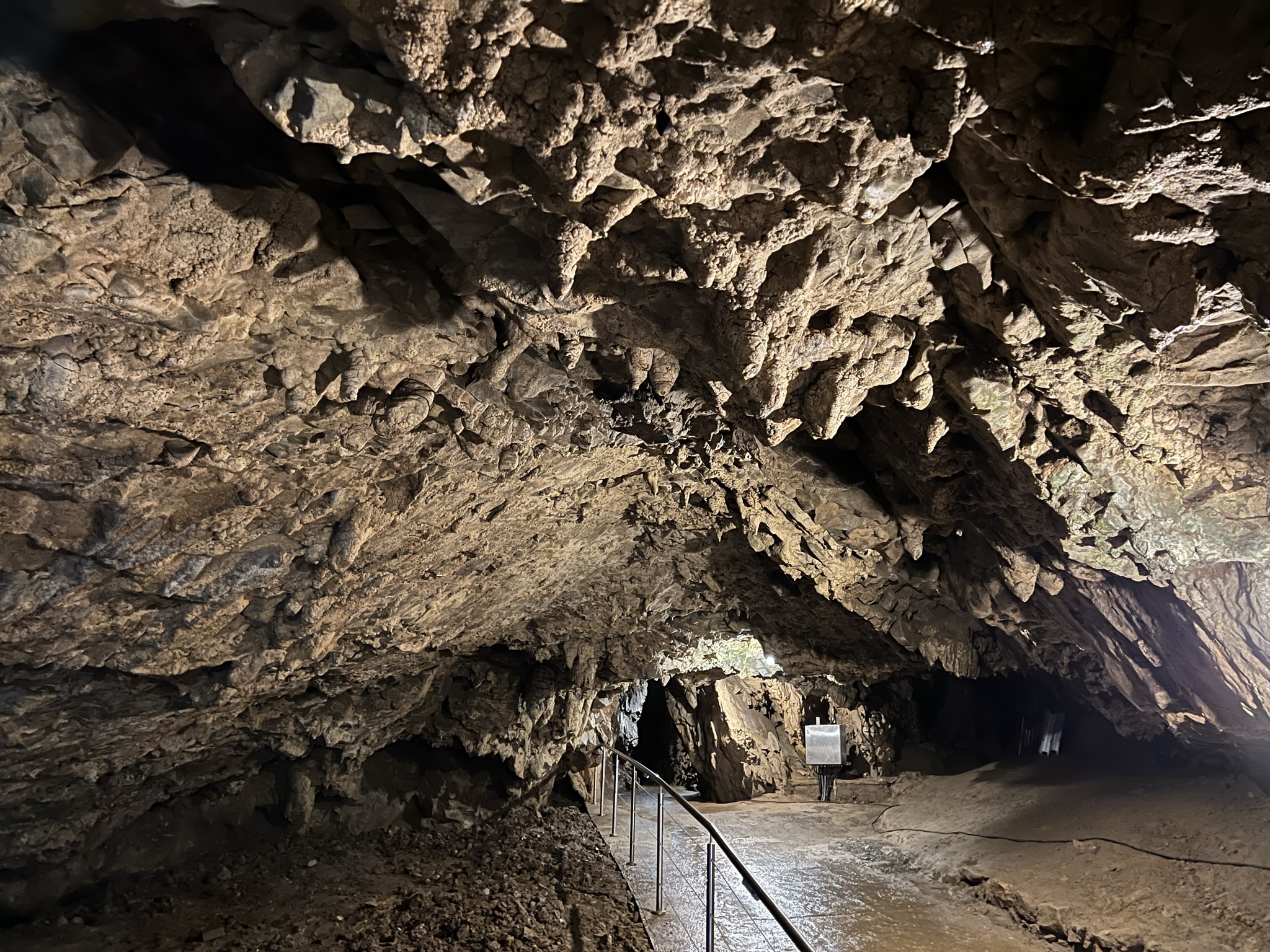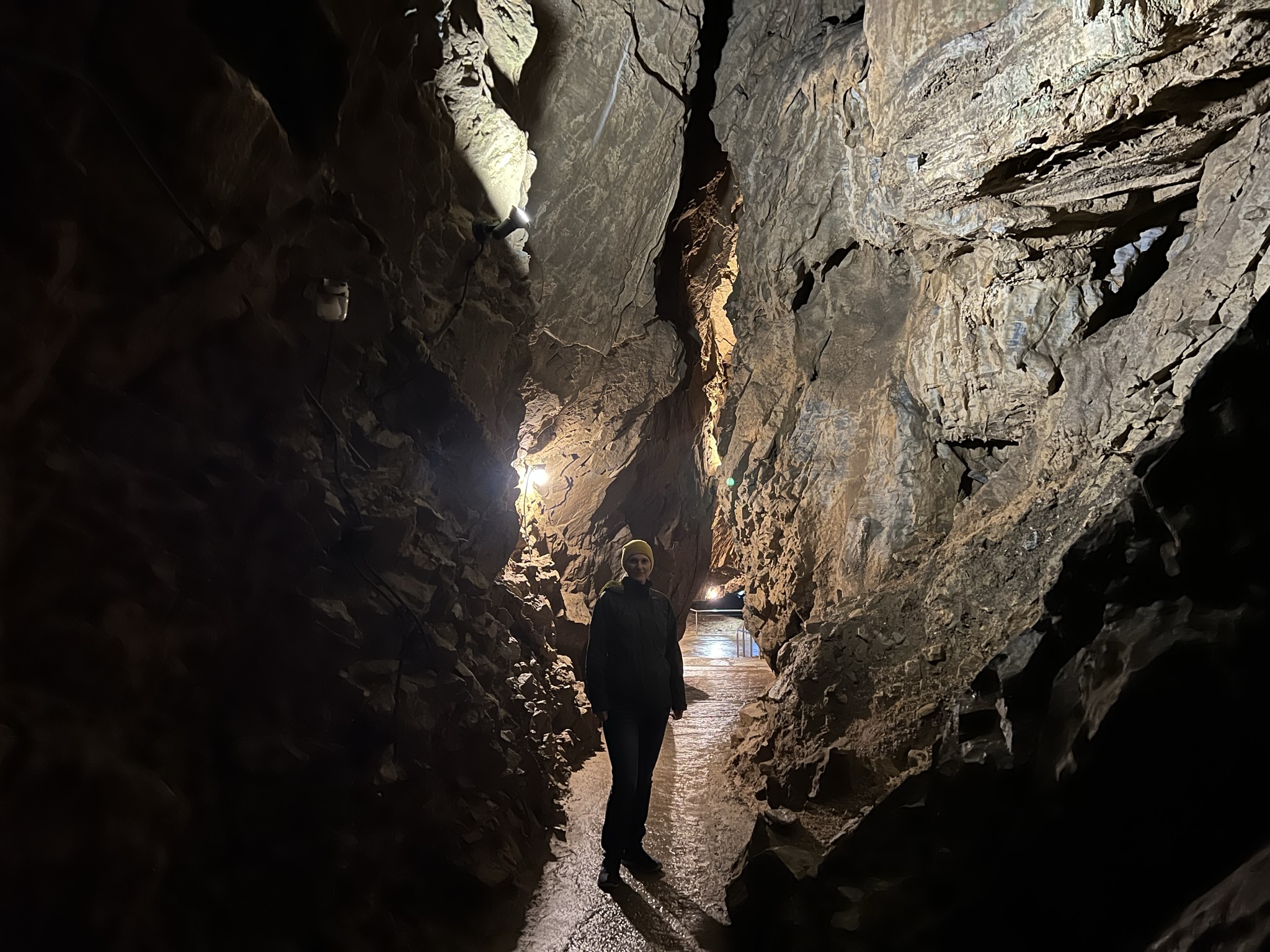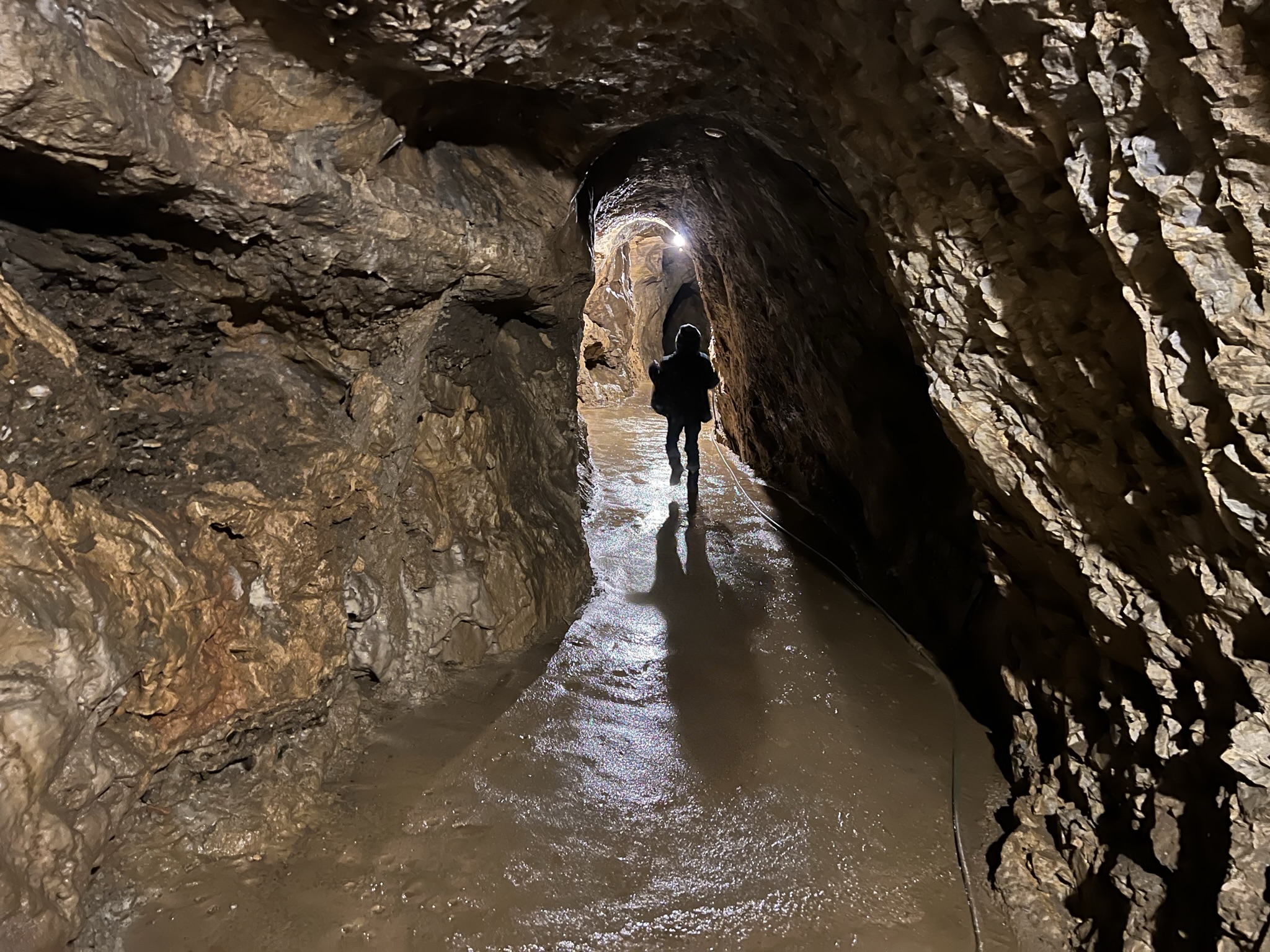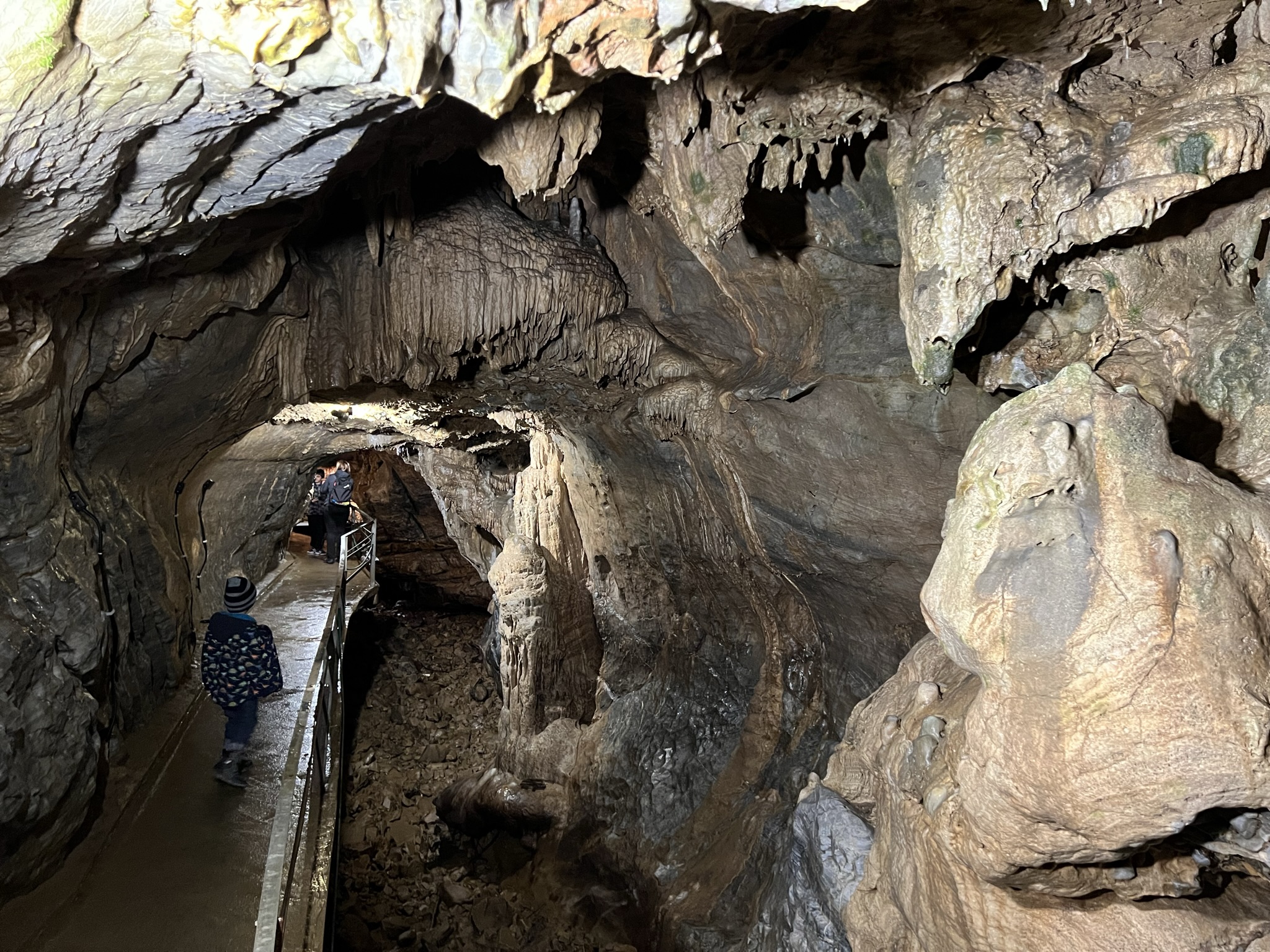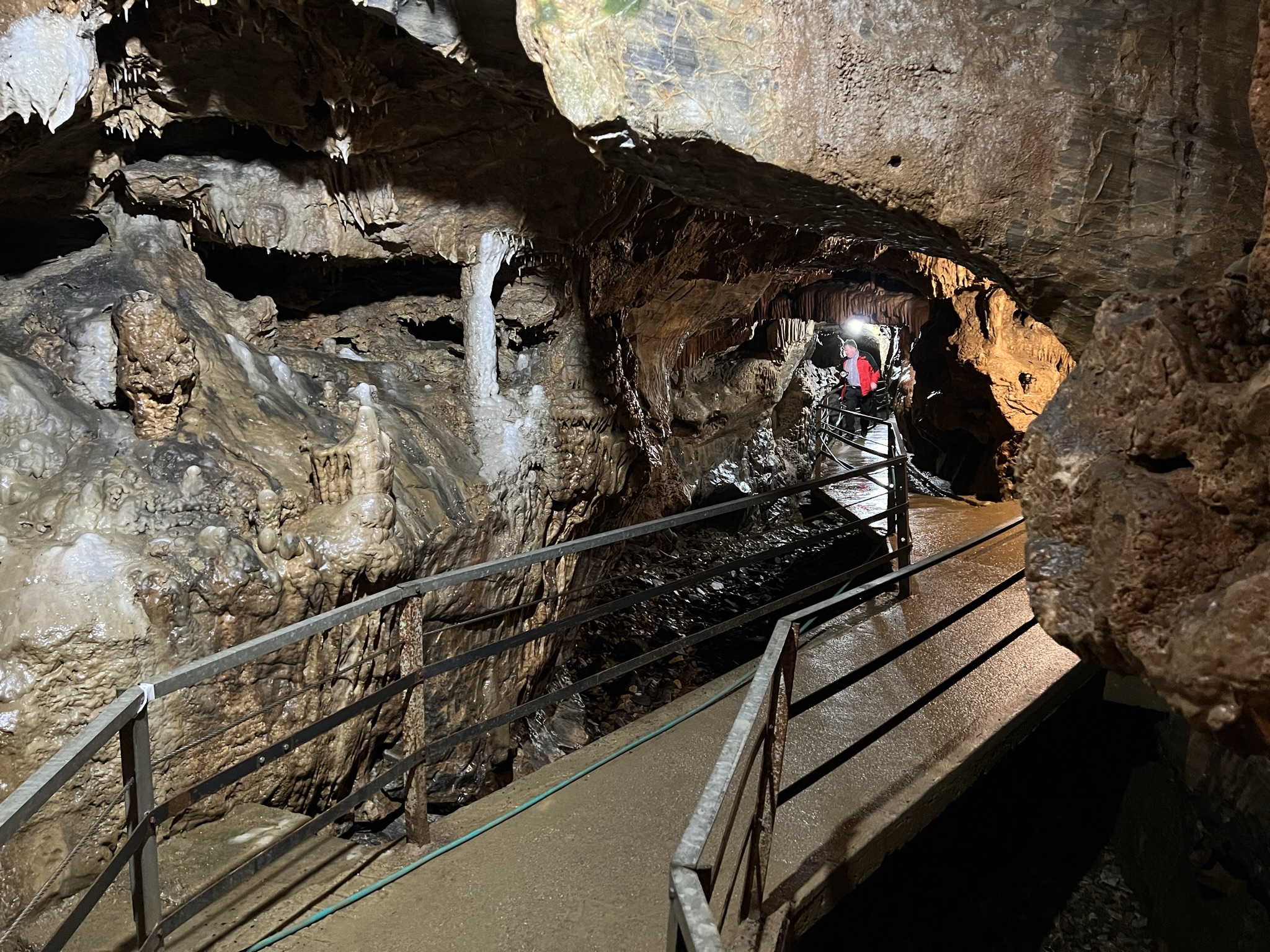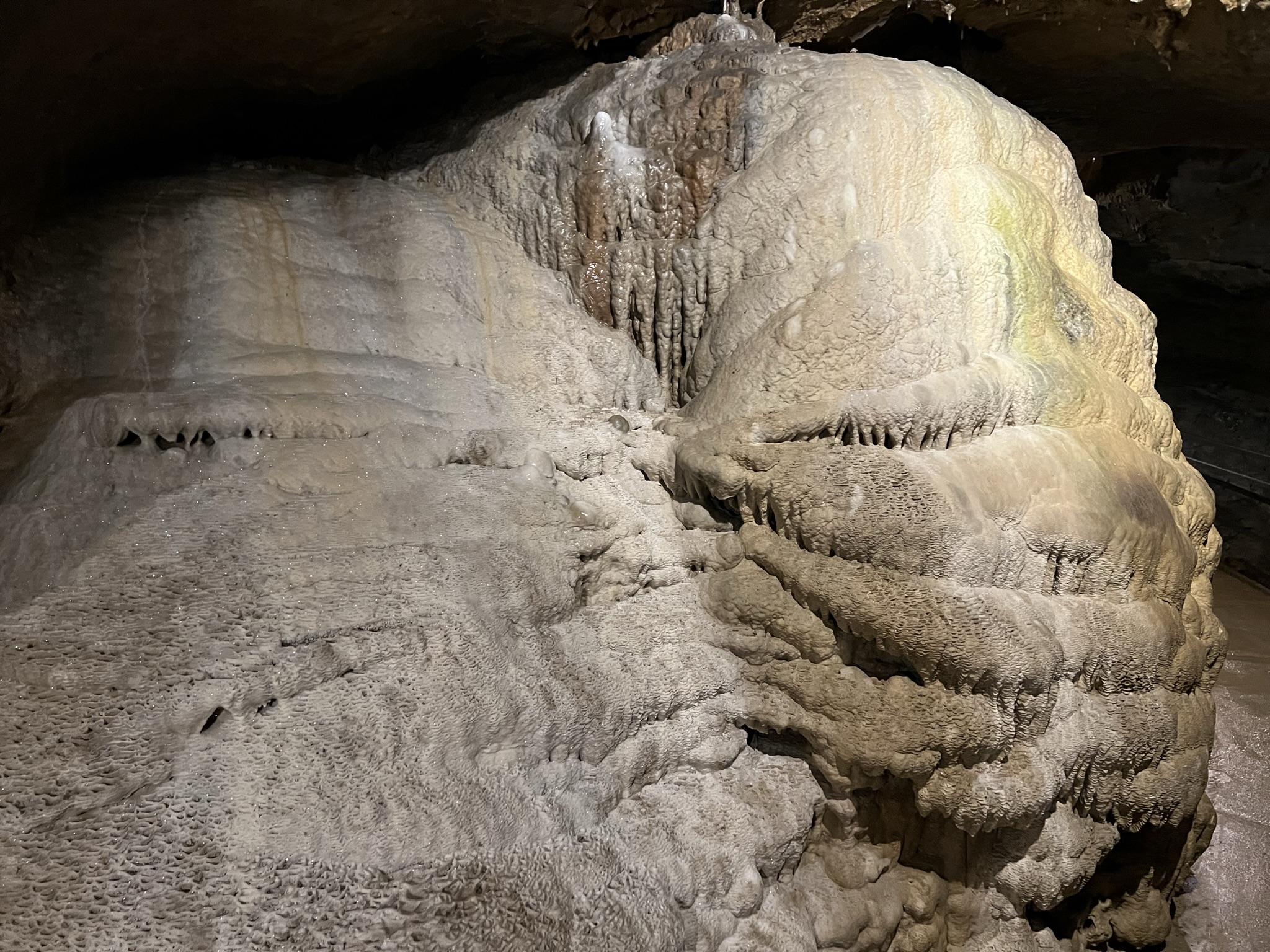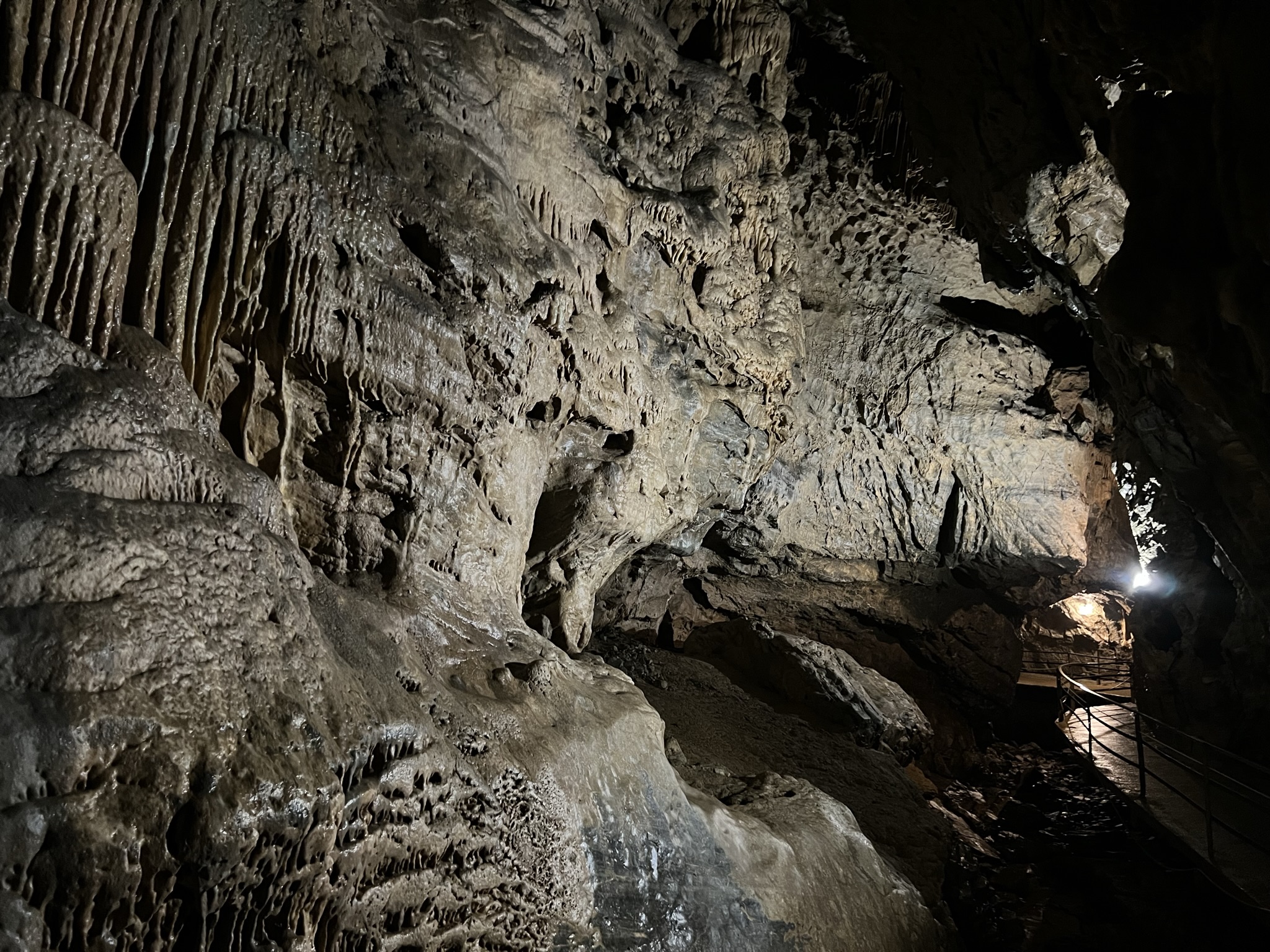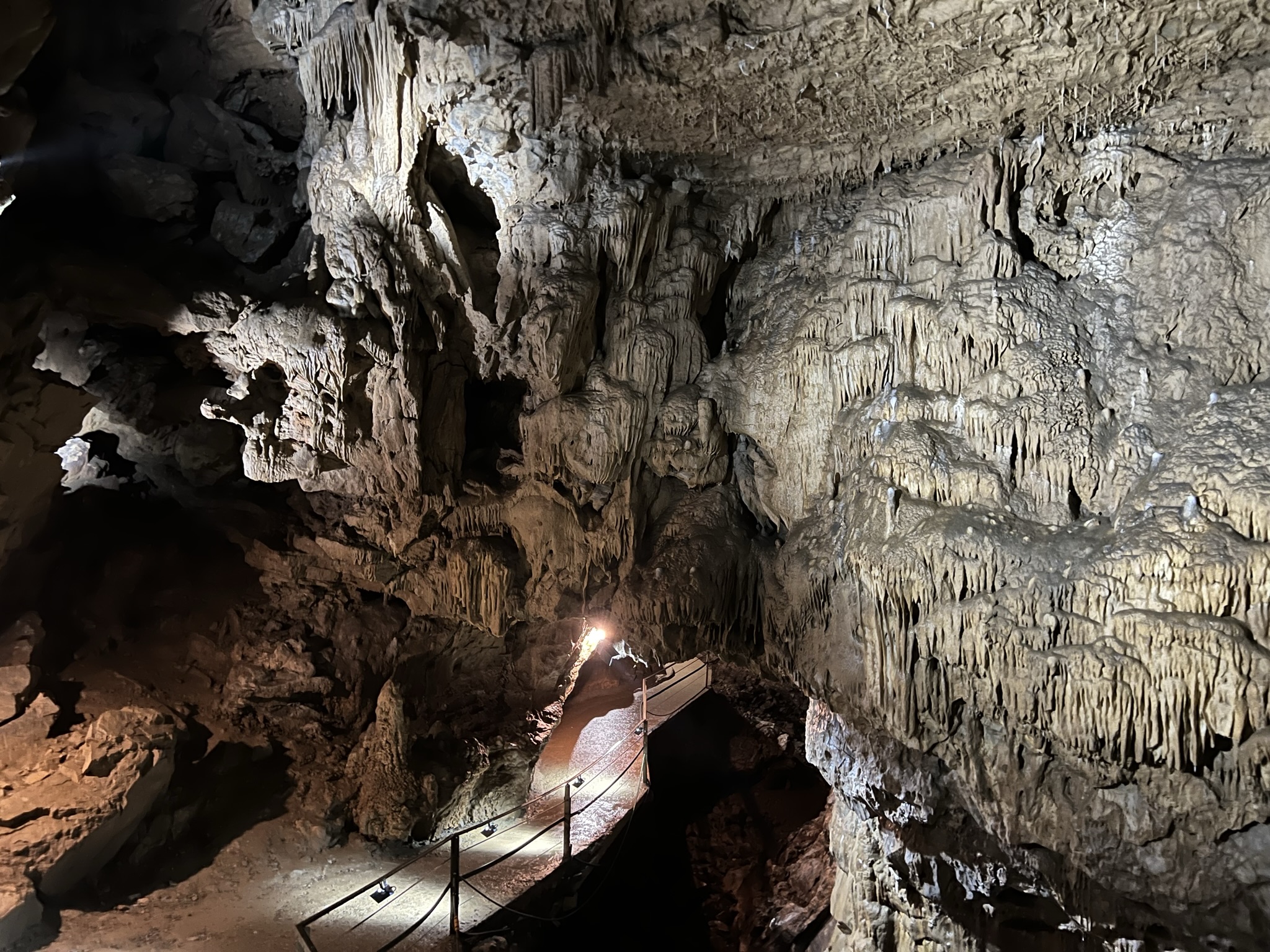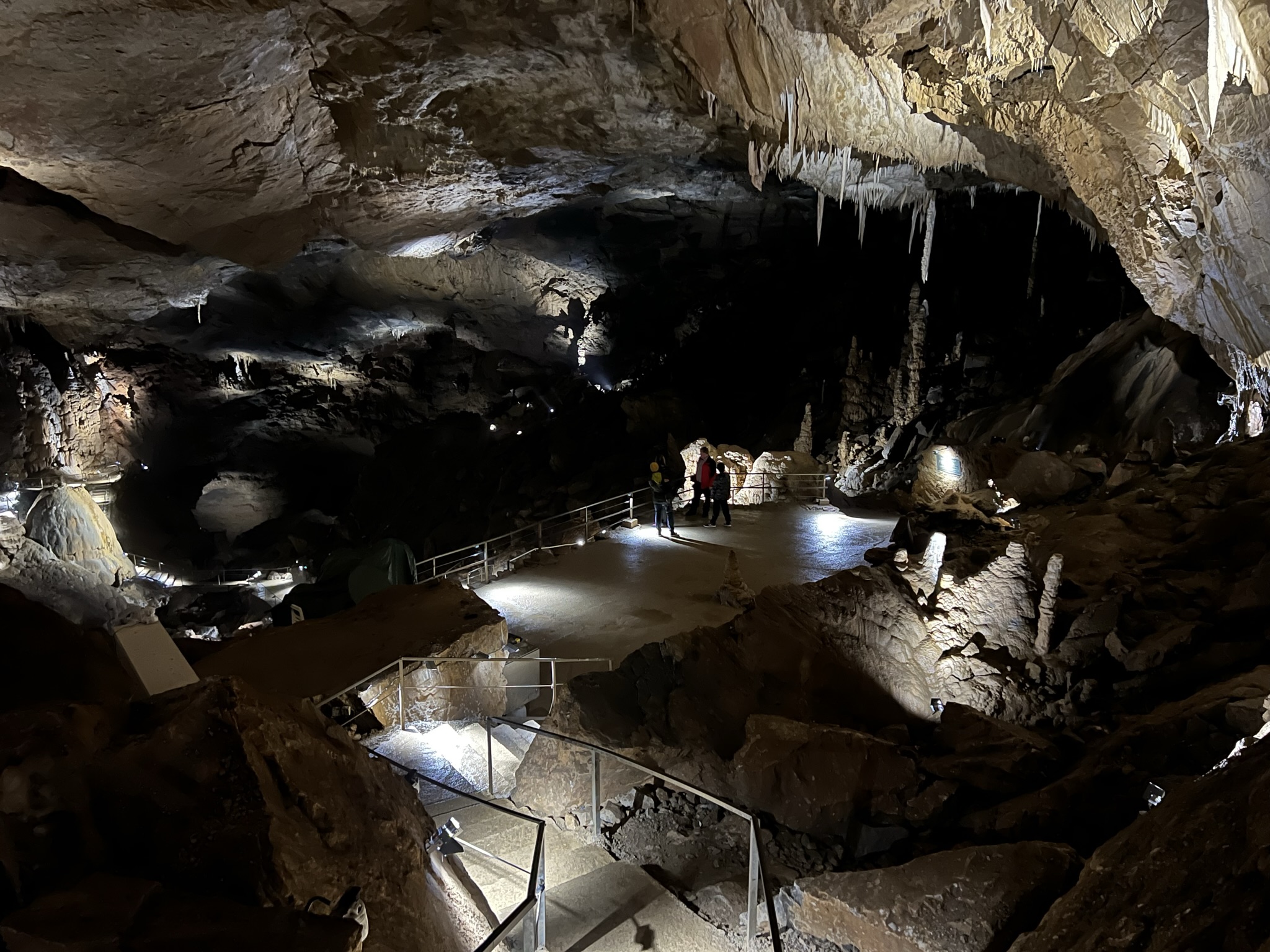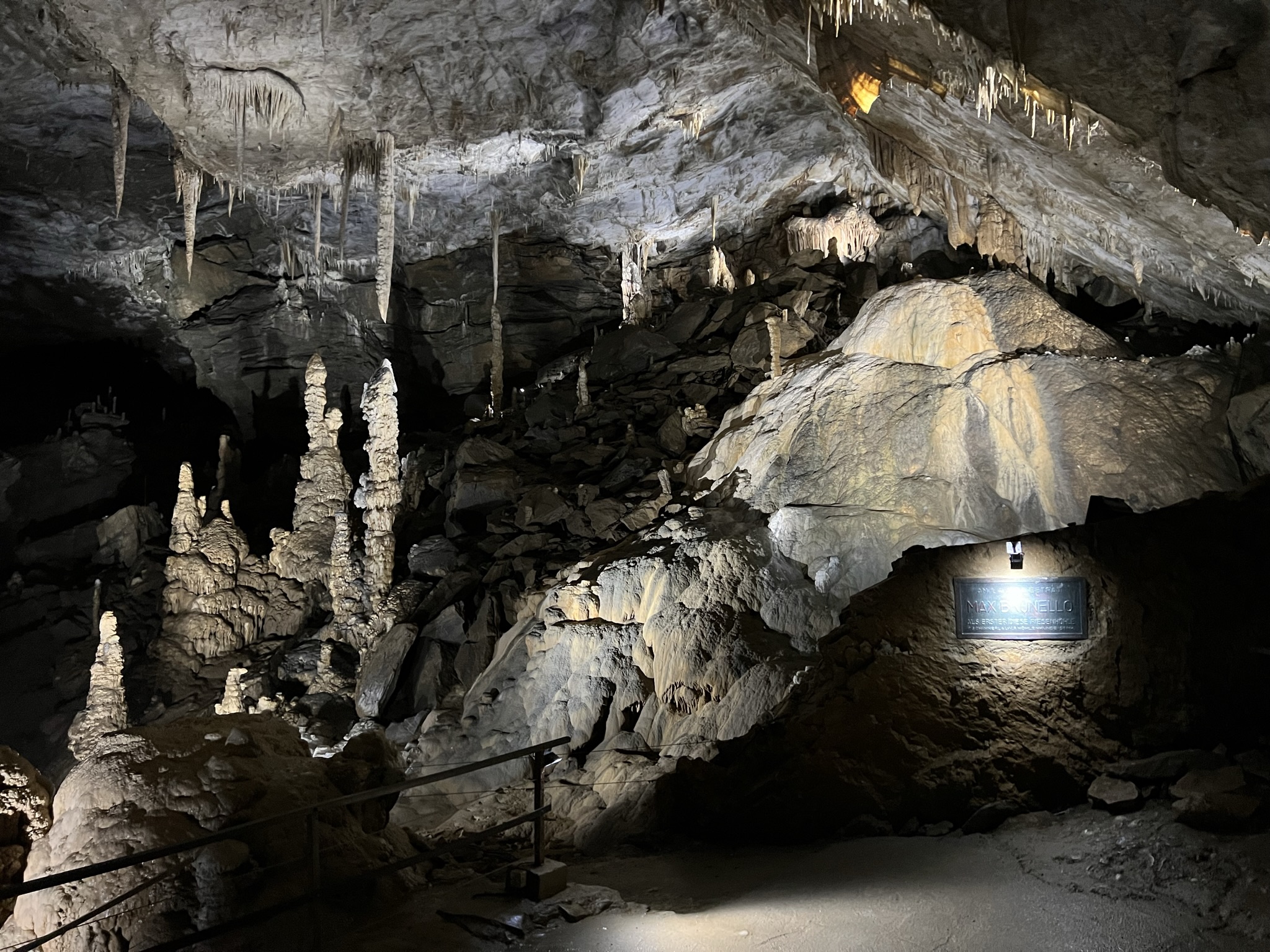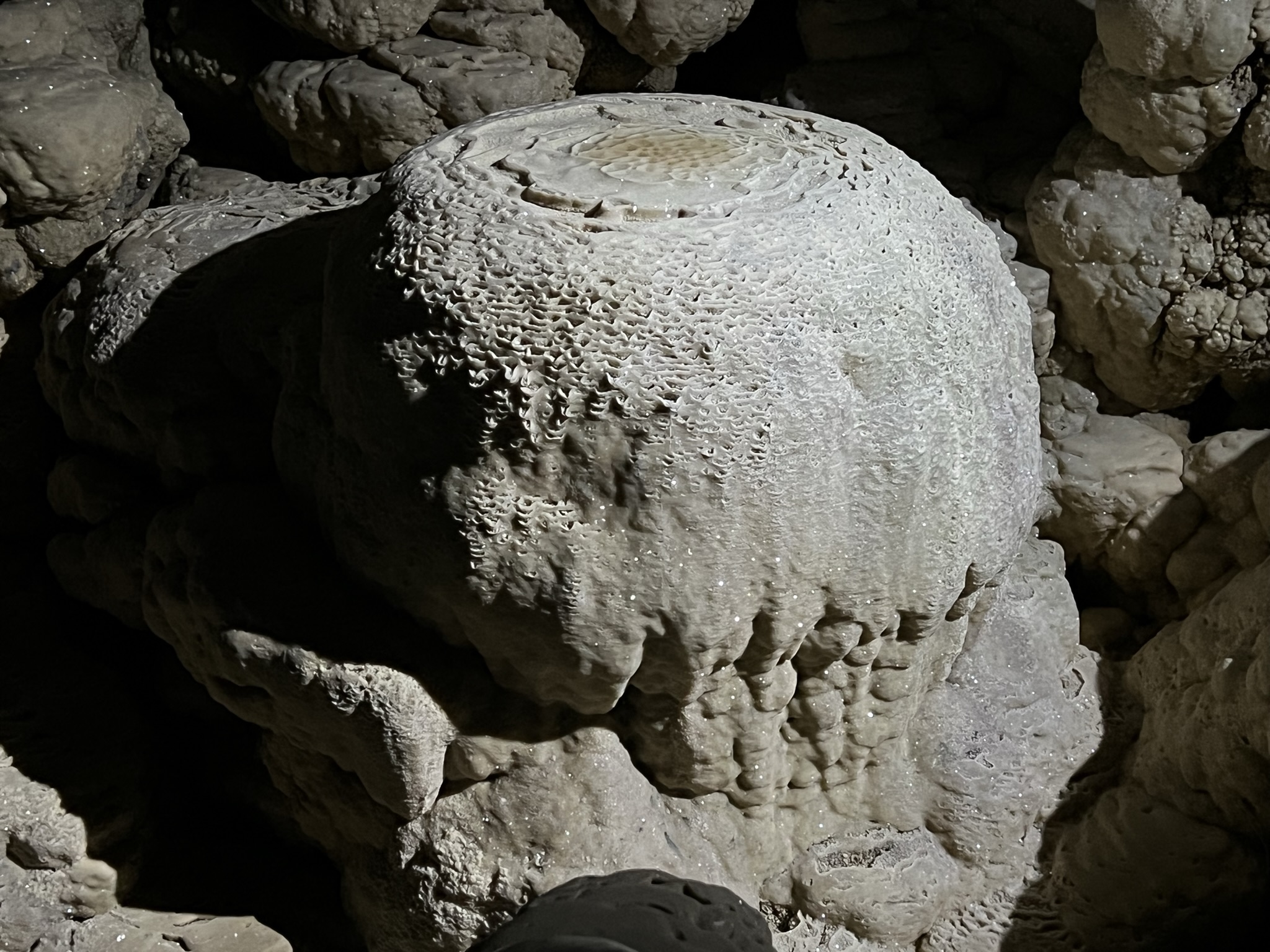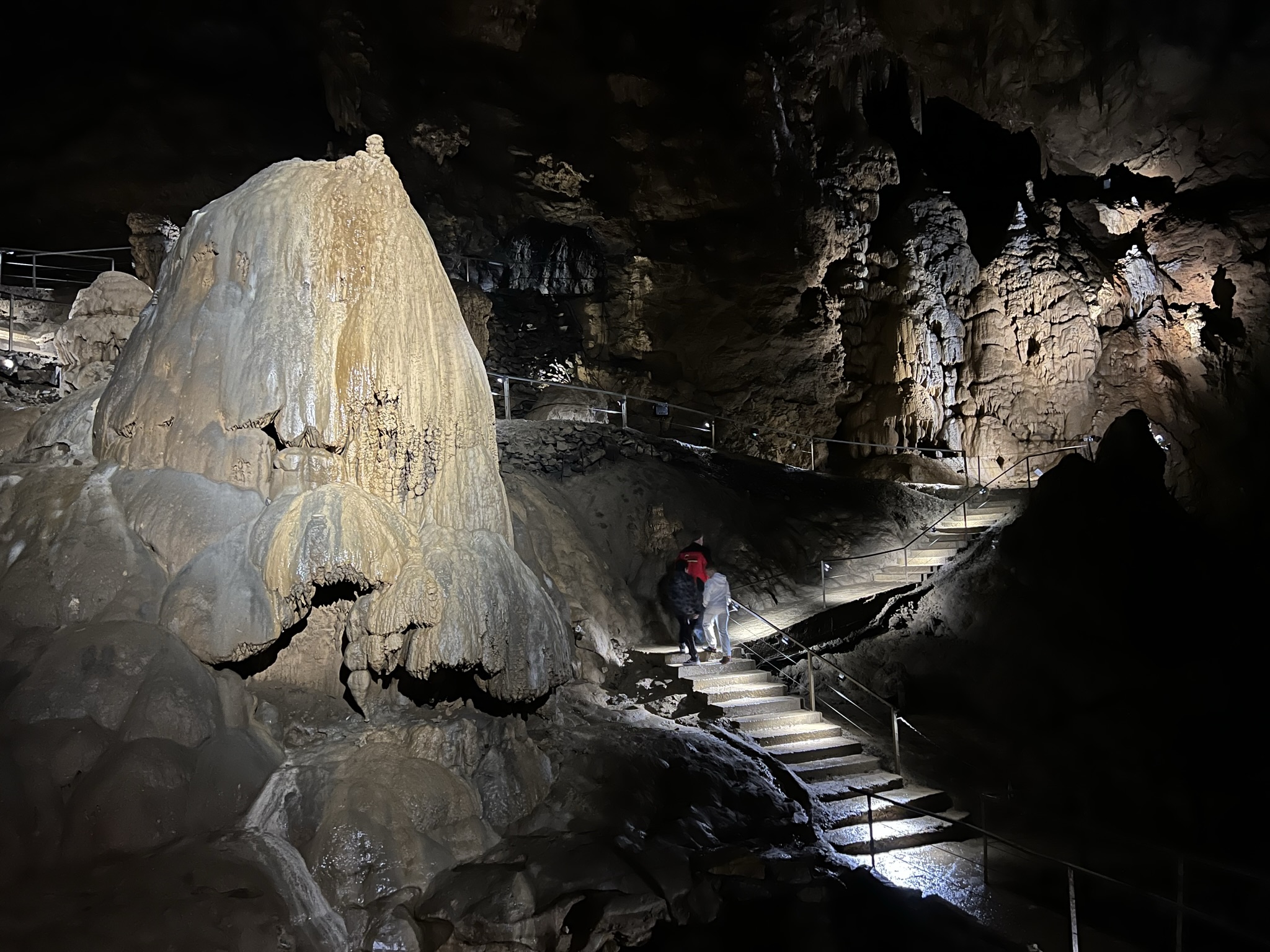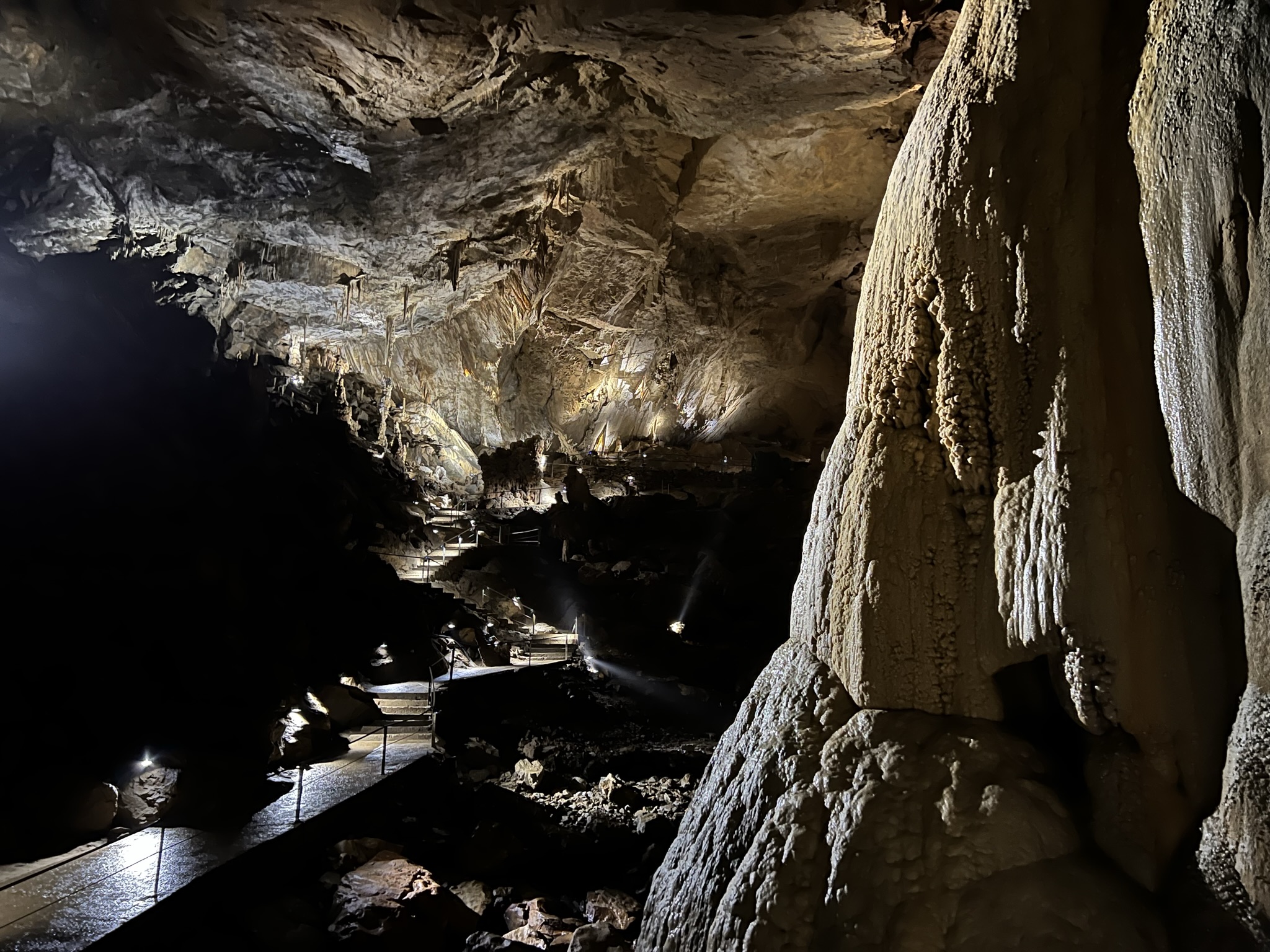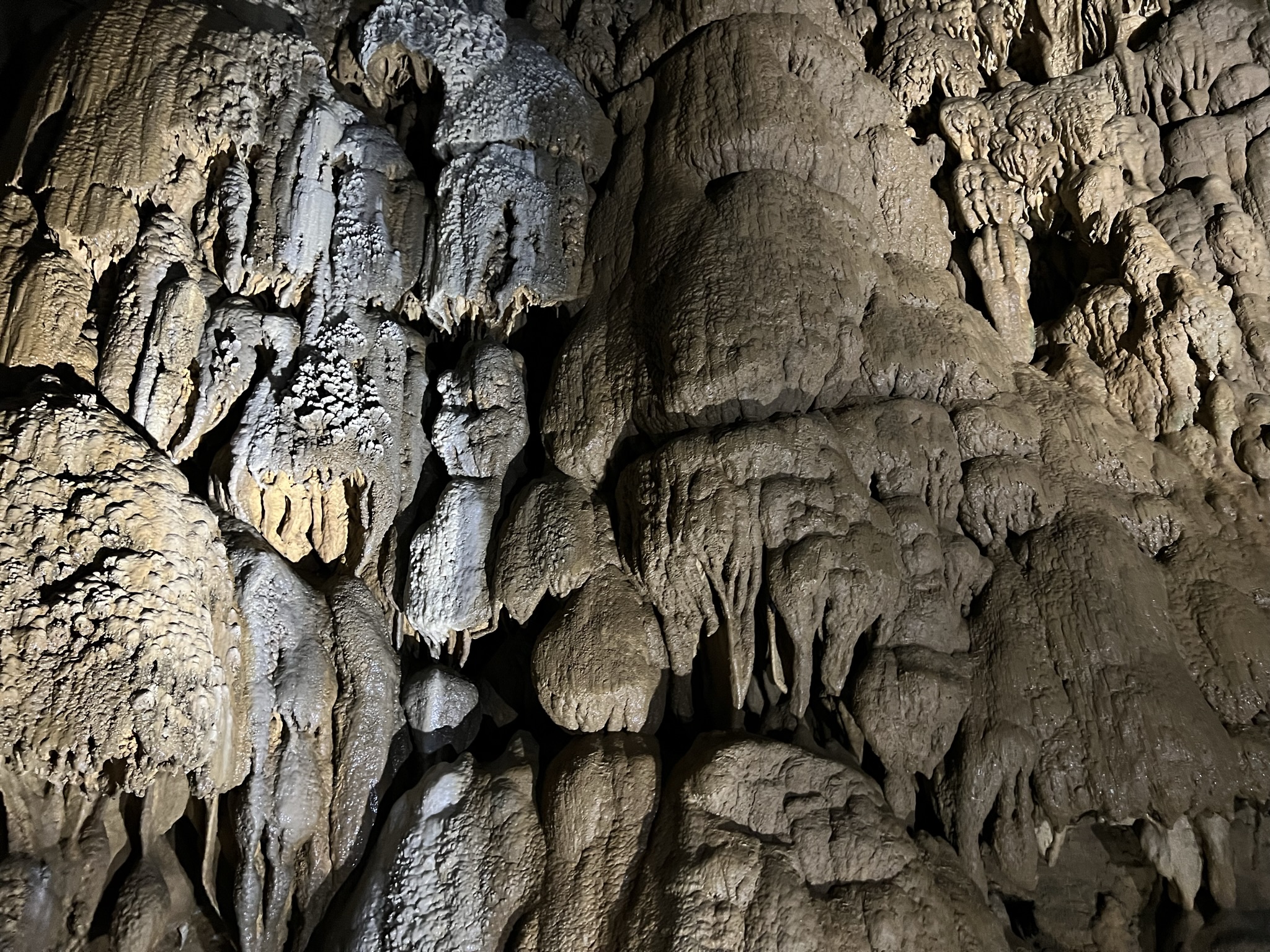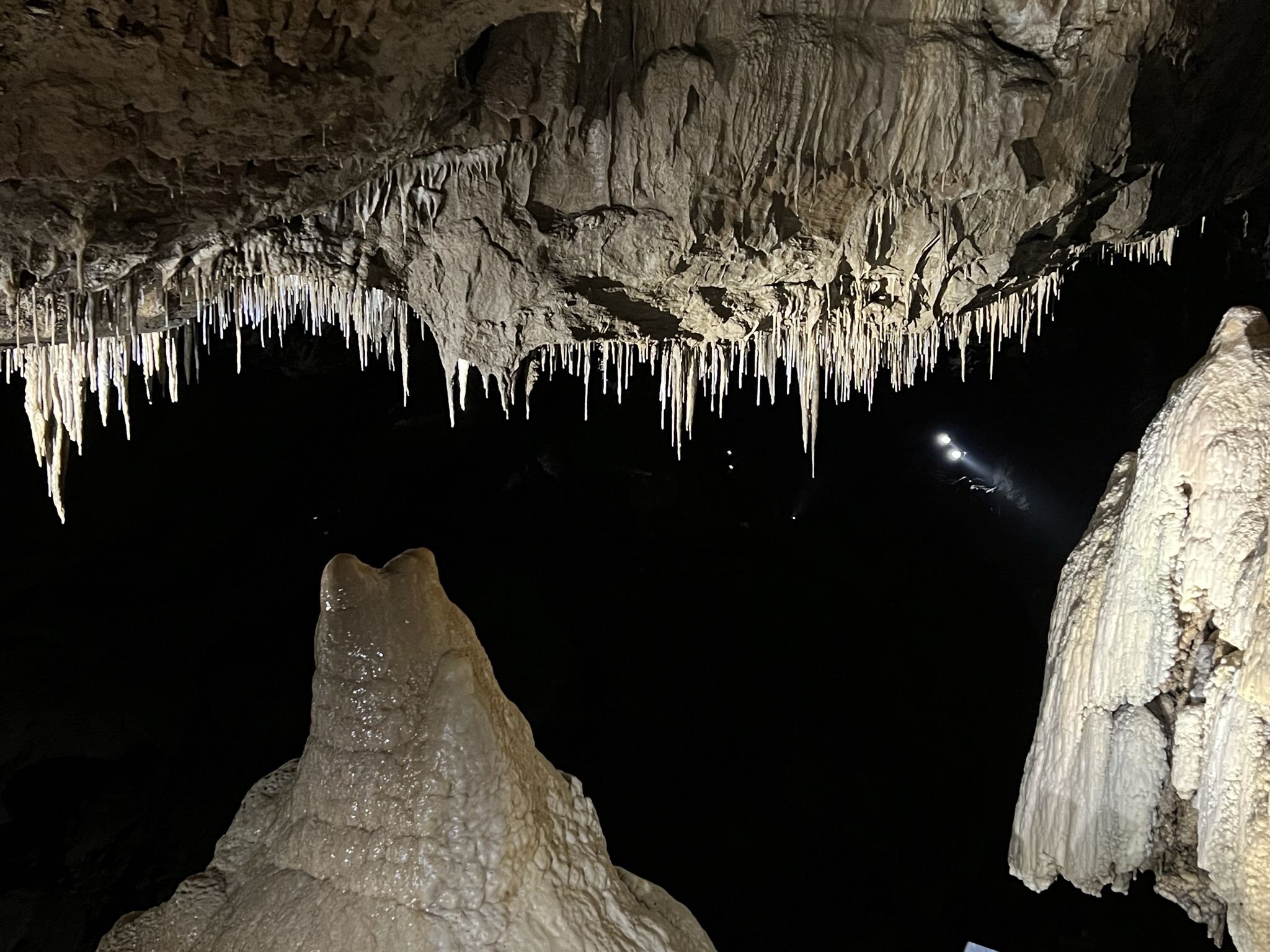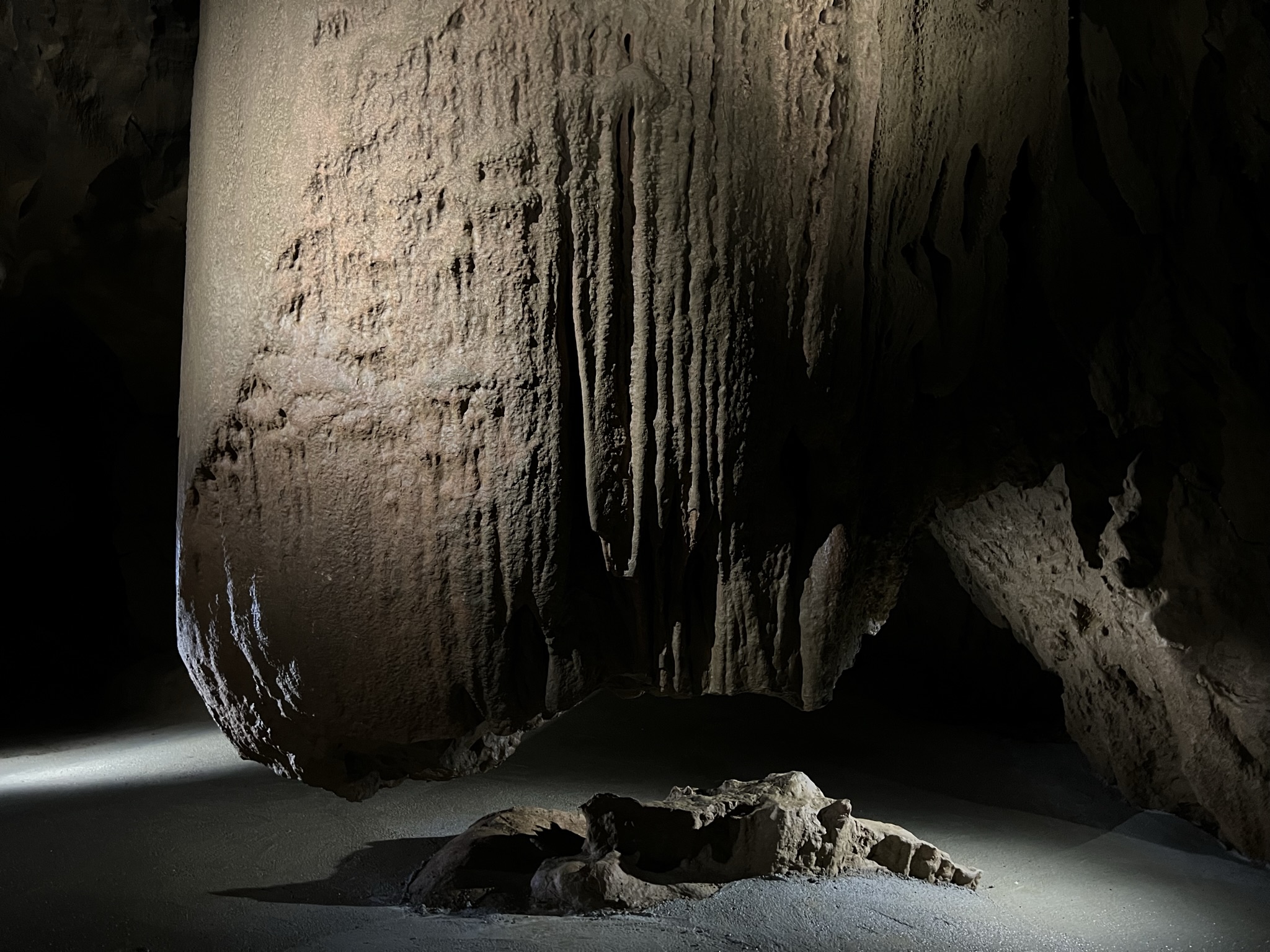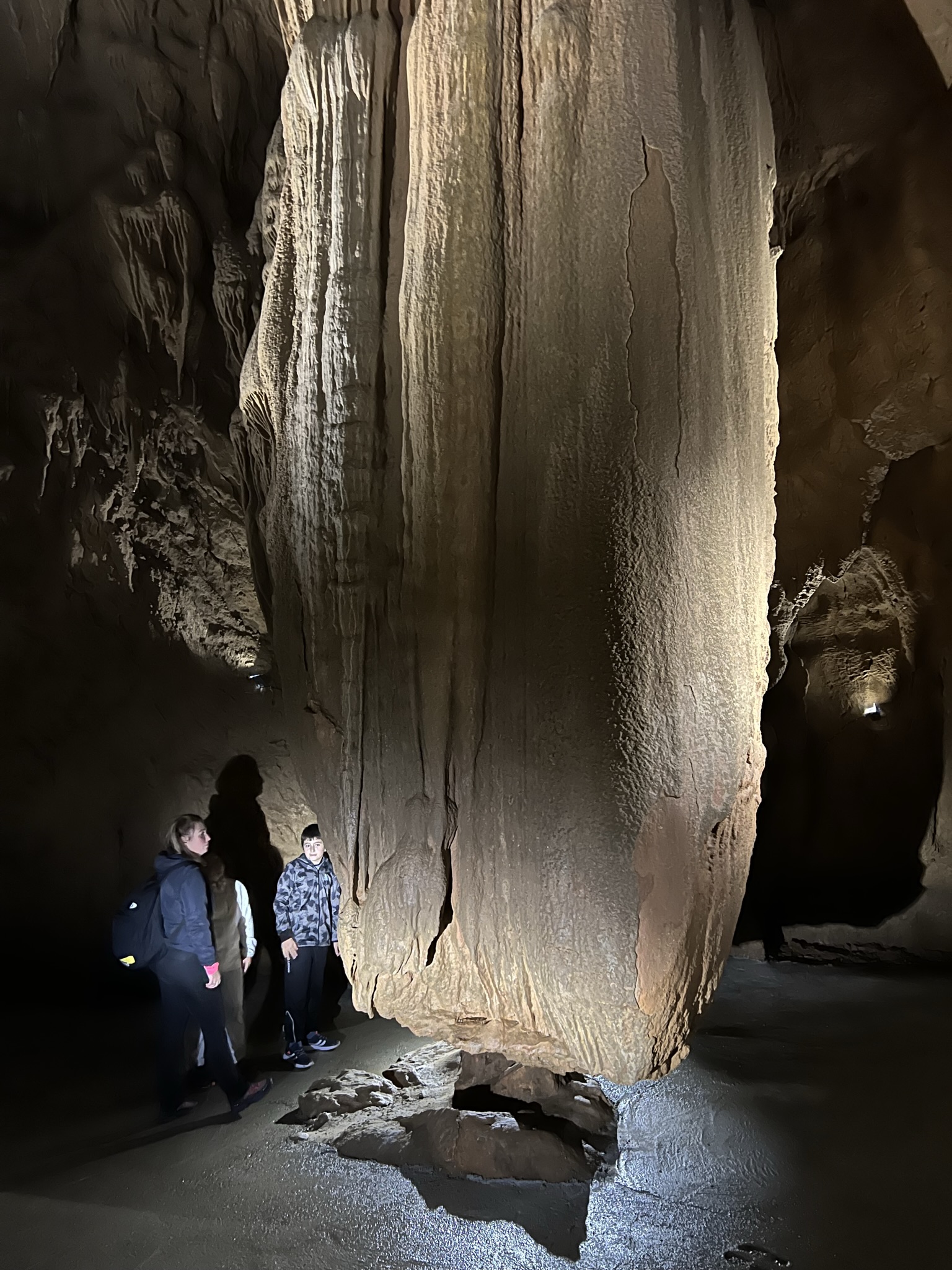Brief information:
- Where is the Lurgrotte? 25 kilometers north of Graz. Address: 8102 Semriach Lurgrottenstraße 1
- Opening hours? Summer operation from April 15th to October 31st, daily guided tours at 11:00 am, 2:00 pm and 3:30 pm.
Winter operation from 2 November to 14 April Guided tours Saturdays at 2:00 p.m. and Sundays at 11:00 a.m. Here you can find all opening times of Summer and Winter. - How much is the entrance fee? 9€, here you can find all prices
The Lurgrotte in general
The Lurgrotte is the largest active water cave in Austria. The Lurbach flows through it from Semriach down into the Murtal. However, it is very rare that you can actually see the water flowing. Climate change is also making itself felt here.
During a guided tour, you walk through underground rock gorges and can discover a beautiful cave world with sinter formations, stalactites and rock domes.
The story
The oldest depiction of the Lurgrotte Semriach dates from the years between 1601 and 1605. It was first mentioned in documents in 1822. Its actual discoverer is considered to be Max Brunello, who was able to reach the Great Cathedral on April 1, 1894.
The first complete crossing of the approximately five-kilometer-long cave was achieved in 1935. Subsequently, work began on developing the Lurgrotte as a show cave with the help of walkways and tunnels. From 1962, visitors were able to walk through the entire cave until a storm washed away large parts of the buildings on July 15, 1975. Today, the Lurgrotte can be explored with guided tours from both sides for a total of around two kilometers.
The leadership
We visit the Lurgrotte in the off-season, at the end of October. There isn't a single car in the parking lot. However, the friendly guide in the shop tells us that it looks completely different in summer and during school times.
We spend a long time looking around the shop until the tour starts. There are all kinds of stones for sale here - although many of them do not come from the cave.
Shortly before 2 p.m., four more people arrived. At least there were more than five of us, so the tour lasted about 70 minutes instead of 55 minutes.
The guide locks the shop and leads us to the cave entrance, where he opens a gate for us. We enter the cave. It is a constant 9°C here. It is well lit and secure. However, it is not suitable for strollers or wheelchairs, as there are a few stairs and narrow paths to negotiate.
Although the guide is very entertaining and humorous, the beginning of the tour is, to be honest, a little disappointing, as there is nothing extraordinary to see. As mentioned, we had imagined flowing streams, but these are increasingly rare to see. After a few minutes, however, the path becomes narrower, more winding and also more interesting. More and more Stalagmites (stalactites hanging from above) and Stalactites (growing up from the ground) can be seen.
The guide keeps telling us interesting things about the cave. We even spot a few small bats. After a while we reach Great Cathedral (Halle), the absolute highlight of the tour. With a length of 120 metres, a width of 80 metres and a height of 40 metres, the cathedral is one of the one of the ten largest cave domes in the world.
We cross and finally walk around the cathedral. After climbing a few more stairs, we reach the largest free-floating stalagmites in the world, as the guide tells us. The size is simply impressive.
Finally, we turn around and walk through the cathedral again. We stop at a platform and enjoy a light show that presents different parts of the grotto. The ever-present dripping of water in the Great Cathedral is accompanied by classical music.
After about 70 minutes we leave the cave again.
Conclusion: A really beautiful cave and a great presentation. We can only recommend this tour to everyone.


